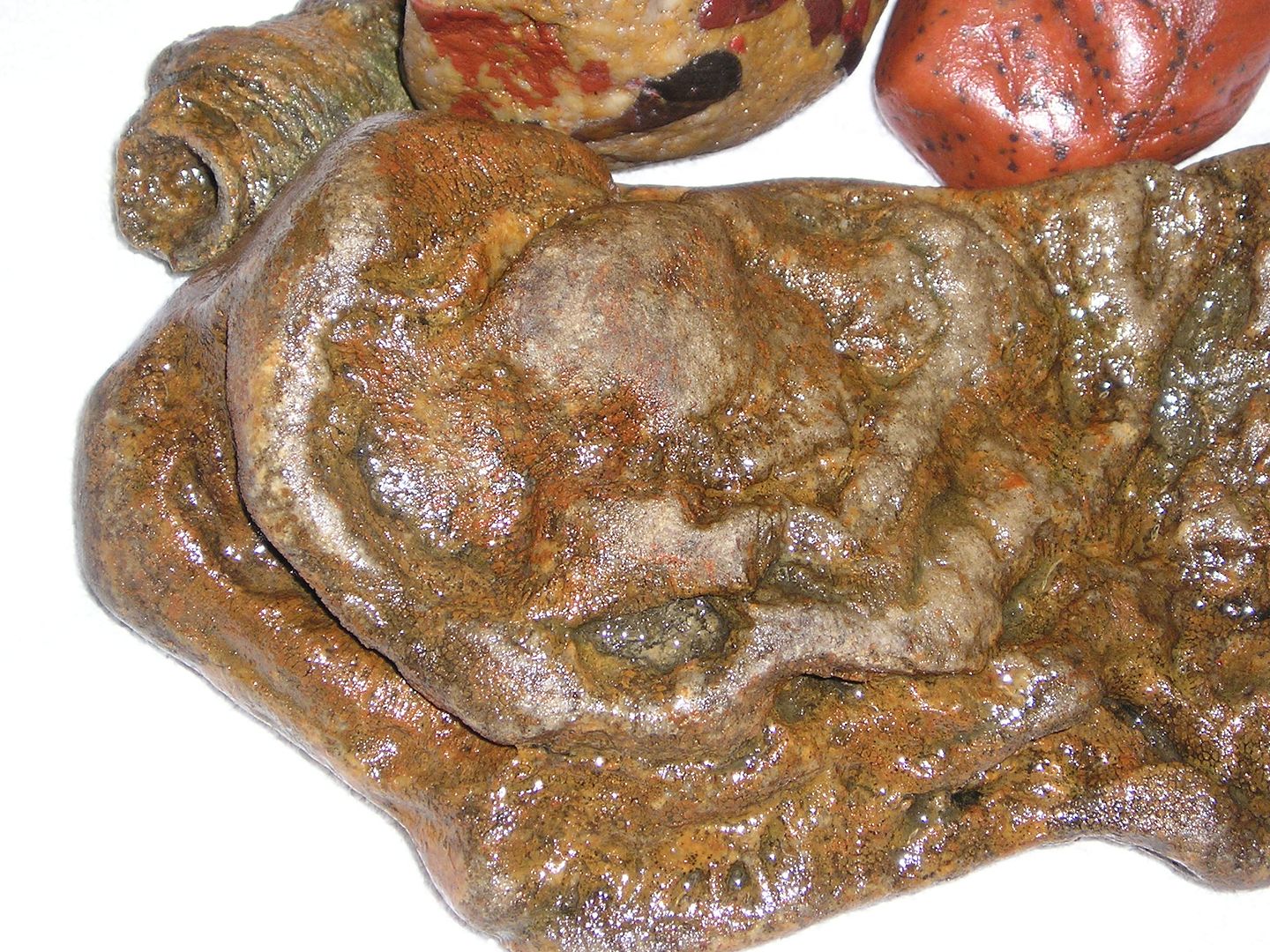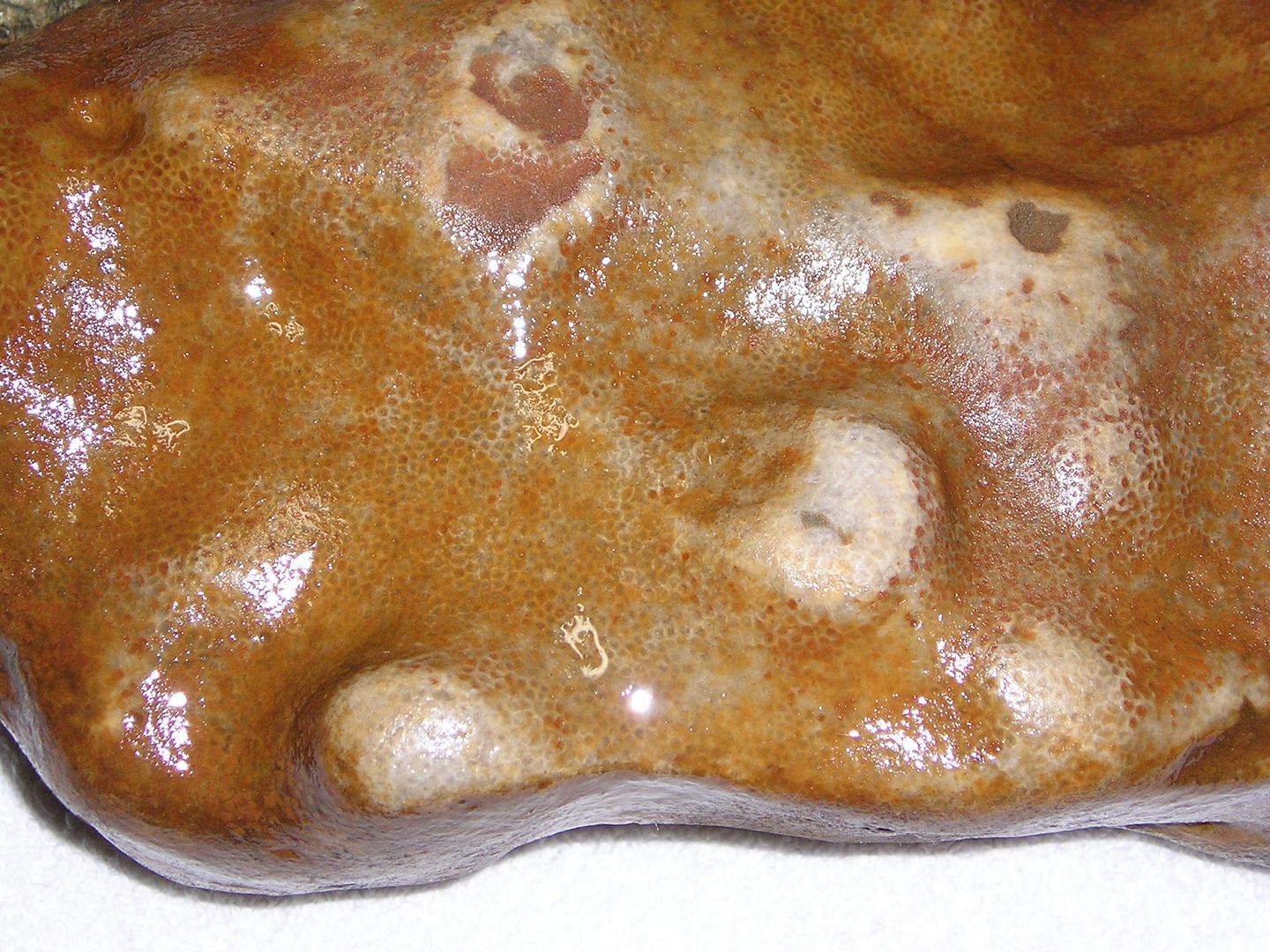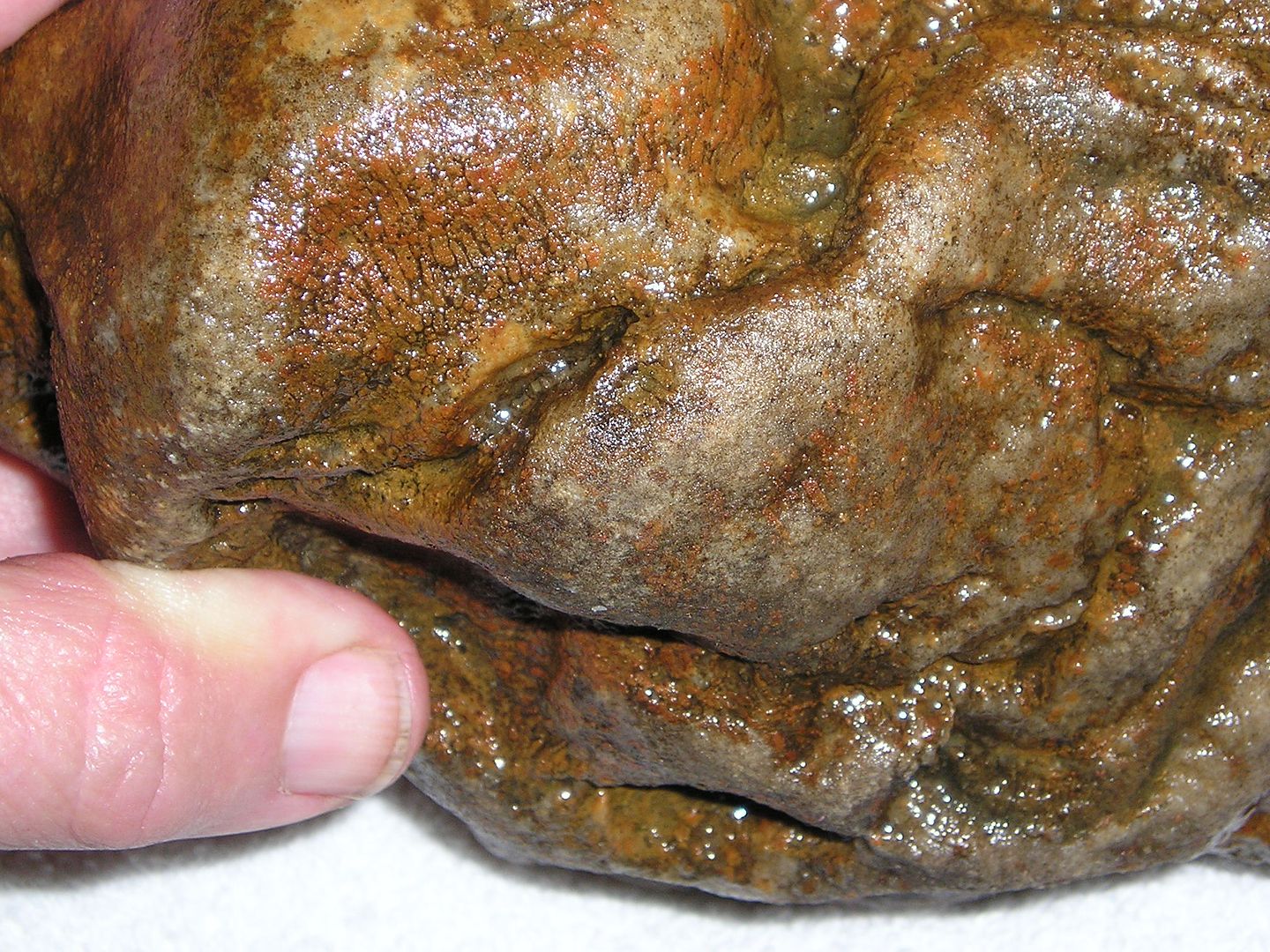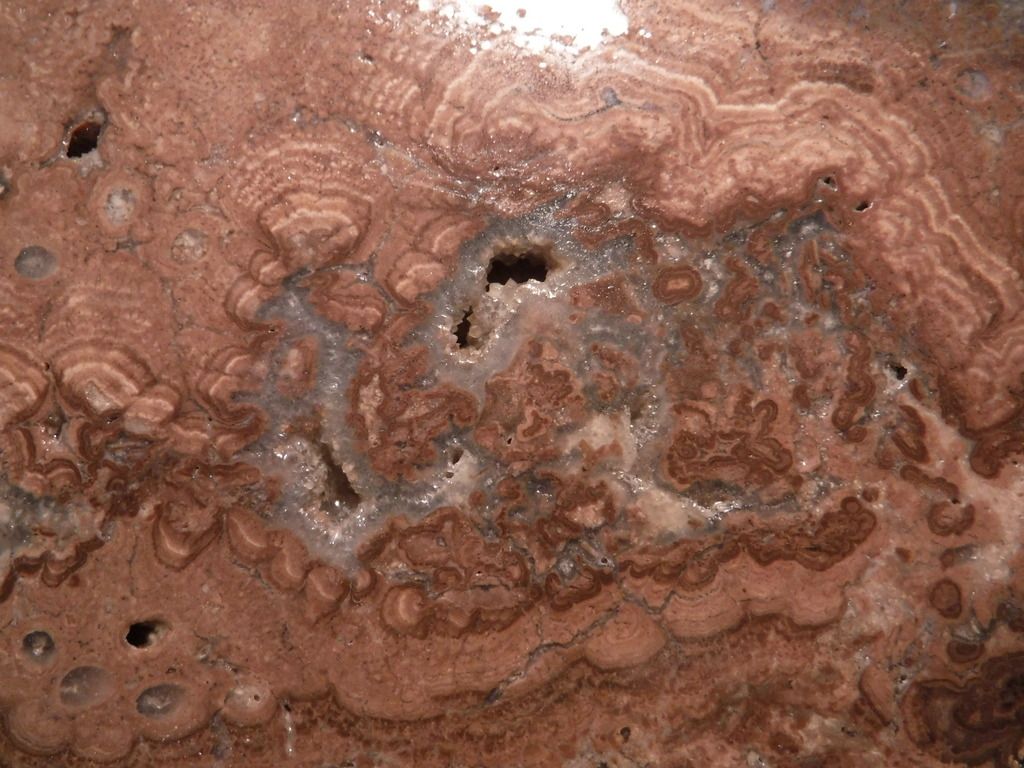|
|
Post by snowmom on Oct 28, 2015 5:43:05 GMT -5
found this fairly complete specimen on a recent outing. Devonian Era, NE side of the tip of the mitt, MI palaeos.com/metazoa/porifera/stromatoporoidea.html See later post for more info, i misidentified this one to begin with, hope i have it right this time.    |
|
Fossilman
Cave Dweller 
Member since January 2009
Posts: 20,718 
|
Post by Fossilman on Oct 28, 2015 8:59:08 GMT -5
Very very nice,glad you picked it up.......Awesome find....Thumbs up
|
|
Deleted
Deleted Member
Member since January 1970
Posts: 0
|
Post by Deleted on Oct 29, 2015 22:32:16 GMT -5
Nice find. Pretty clearly a fossil. Can you offer comparison photos that actually look similar to yours indicating the proposed identification? Nothing on the link you offer looks like yours.
Truthfully yours looks better!
|
|
timloco
has rocks in the head
  
Member since April 2012
Posts: 545
|
Post by timloco on Oct 29, 2015 23:22:14 GMT -5
That is really cool! Imagine, that was made when the very first land animals appeared. neat!
|
|
|
|
Post by snowmom on Oct 30, 2015 3:00:40 GMT -5
Nice find. Pretty clearly a fossil. Can you offer comparison photos that actually look similar to yours indicating the proposed identification? Nothing on the link you offer looks like yours. Truthfully yours looks better! There are mamelons present in this one, and the appearance of possible astrorhizae in the center of the mamelons, though they are not very well defined. This fossil seems to me to have characteristics of both stromatoporids and stromatolites, being closely layered in places with the mamelons , and in others more loosely formed . I lean toward stromatoporid due to the visibility of the cell structure which does not seem to be present in stromatolite i own, and have seen illustrated. Stromatoporids and stromatolites were at one time the most abundant living thing on earth, forms of it being practically the only thing on earth in precambrian and early paleozoeic times- and a good fossil record remains of many types in varying forms of fossilization. But evolution of them is poorly documented and the species and forms are very poorly defined at this point. I can not put a name on it as to more than possible stromatoporid/stromatolite. Scientists who study this area of fossil in practice argue over exact names, I can hardly hope to get it right with a gazillion kinds to choose from, and many more remaining to be discovered, i am sure. www.fossilmuseum.net/Fossil_Galleries/StromatolitesAmerica.htm I can look for fossils which more closely resemble this one, but due to the nature of these critters, individual specimens have a great deal of variety. more when i find it.  |
|
|
|
Post by snowmom on Oct 30, 2015 3:37:33 GMT -5
Nice find. Pretty clearly a fossil. Can you offer comparison photos that actually look similar to yours indicating the proposed identification? Nothing on the link you offer looks like yours. Truthfully yours looks better! this is a devonian era stromatoporid from Indiana, there are some similarities. I can find a few cross sections but not many entire examples in photos. |
|
|
|
Post by snowmom on Oct 30, 2015 3:47:40 GMT -5
Nice find. Pretty clearly a fossil. Can you offer comparison photos that actually look similar to yours indicating the proposed identification? Nothing on the link you offer looks like yours. Truthfully yours looks better! this one is more eroded, mamelons and astrophizae not as clearly defined. I have another one similar to this, just the spiral area, and a little more eroded/deteriorated, clearly showing cell structure. Specimens this well preserved are evidently hard to find or of little interest to most fossil collectors. Algae sponge is a little boring compared to trilobites and dinosaurs, i guess! |
|
|
|
Post by snowmom on Oct 30, 2015 4:10:07 GMT -5
|
|
indiana
spending too much on rocks
 
Member since October 2015
Posts: 285 
|
Post by indiana on Oct 30, 2015 8:52:04 GMT -5
That's a great page snowmom.
|
|
inyo
noticing nice landscape pebbles
 
Member since September 2014
Posts: 85
|
Post by inyo on Oct 31, 2015 0:26:18 GMT -5
Deleted by author.
|
|
|
|
Post by snowmom on Oct 31, 2015 5:03:03 GMT -5
thanks so much inyo, after reading all those pages of info i was beginning to suspect it was a good one.
|
|
|
|
Post by braders on Oct 31, 2015 15:41:22 GMT -5
Wow thanks for the head scratching ha ha good reads  may have to post a slab pic of this stuff to make sure I'm calling it by correct name of stromatolite ? |
|
|
|
Post by braders on Oct 31, 2015 15:45:29 GMT -5
 Right or wrong ? |
|
jamesp
Cave Dweller 
Member since October 2012
Posts: 36,600
|
Post by jamesp on Oct 31, 2015 16:25:24 GMT -5
Looks like coral to me Deb. Last photo shows side view of tube structure. A coral with very small corallites, they exist.
It is a bit cow pattie shaped but that could be your weathering/wave/glacier effects.
|
|
|
|
Post by snowmom on Nov 1, 2015 5:32:00 GMT -5
braders, yes i think it is probably stromatolite, from the looks of it... check out photos of kona dolomite and mary ellen jasper to see the same pattern repeated in different colors. The red in most stromatolite fossils is another clue to its ID, it is due to action of the chlorophyll somehow mineralizing, not sure of the process. microbiology and chemistry stuff. jamesp, that has been the problem and the argument scientists have been having for years with stromatoporoids, the cell structure seems to calcify, and shows clearly in some fossils but not in most. There has been a great deal of argument over if it was sponge that calcified or a form of coral. It is one of the very first life forms to have appeared on earth ( before any of the corals, i think) and the fossils found are usually not this well preserved. Recent studies have decided the issue in favor of sponge that develops a calcified structure.. a step between algae and sponge,moving towards forms of coral... these were super early pre coral bodies. there have been some found that are combinations of stromatolite and stromatoporoid, a lay person could maybe call stromatoporoids the step between sponge and corals? like all scientific studies i guess its a work in progress. The links above go into some good detail about them. I don't think the glaciers bothered this one, it was most likely safely fossilized and hiding in limestone here on our fossil reefs before the glaciers got here, and really doesn't seem to be weathered at all. 
|
|
jamesp
Cave Dweller 
Member since October 2012
Posts: 36,600
|
Post by jamesp on Nov 1, 2015 6:31:53 GMT -5
It would help if the second photo could be buffed to see a better view of those 'eyes'. It sure looks organized. Is it calcified or silicified ? You probably could wet sand one of those protruding knobs with 400 grit sand paper in a jiffy to get a nice view of the eye structure. Fine specimen to do research on due to it's fine preservation. Check out syringopora coral Columbus Limestone full of both syingopora and stromatoporiods out of Ontario. Nice challenge to ID. en.wikipedia.org/wiki/Columbus_Limestone |
|
|
|
Post by snowmom on Nov 2, 2015 4:46:51 GMT -5
Thanks James, we have syringopora here as well as horn coral, petoskey, charlevoix, ( common names) crinoids, favosites, stromatoporoids and stromatolites, thamnoporoids, many rugosee and branch corals and bivalves, supposedly trilobites too, though i have not found any of those. The stuff is mostly Devonian, a bit of silurian, all very early shallow and warm water reef stuff. They're so abundant I guess I take them for granted and maybe don't appreciate them as I should. Most are only partially silicate and many are embedded in oily slate like stuff that makes a nice contrast to the specimen but it doesn't polish well.. Others are almost pure limestone. The variety in states of preservation is interesting. the stuff that has had contact with Lake and glaciers is usually pretty lacking in detail and beat up. Finding newly exposed stuff gives the best pieces. We are fortunate to have access to an abandoned quarry nearby which has been turned into a park where collectors are allowed. Roadside ditches, gravel, anybody's back yard - they are just everywhere. I don't hunt for fossils but if i see a really good one, i might pick it up to share with visitors, who love them and the pudding stones and Omarullusks that we find here. The last 2 are glacial transports. The grass is always greener, i guess.  |
|
|
|
Post by snowmom on Nov 2, 2015 4:57:03 GMT -5
geo.msu.edu/extra/geogmich/paleozoic-limestone.html I looked at this page a while ago and realized that i had been to the area where the reef formations change from one type of rock to the other, it was visible as i stood there, really almost beneath my feet. Really made geology come to life for me. jamesp, you and 1dave taught me how much a rock hunter can learn by studying maps and understanding the geology of a given area, I appreciate that so much, and the understanding has enriched the hunt for me tremendously. Grateful for that. I rely on it now. 
|
|
jamesp
Cave Dweller 
Member since October 2012
Posts: 36,600
|
Post by jamesp on Nov 2, 2015 6:04:16 GMT -5
There is a lot going on geologically there snowmom. Glacier and meteor movement, then add variable ocean deposits and depths.
I envy your Heinz 57 mix of goodies.
|
|
|
|
Post by snowmom on Nov 2, 2015 13:42:22 GMT -5
|
|










 ) has something to offer.
) has something to offer. 








